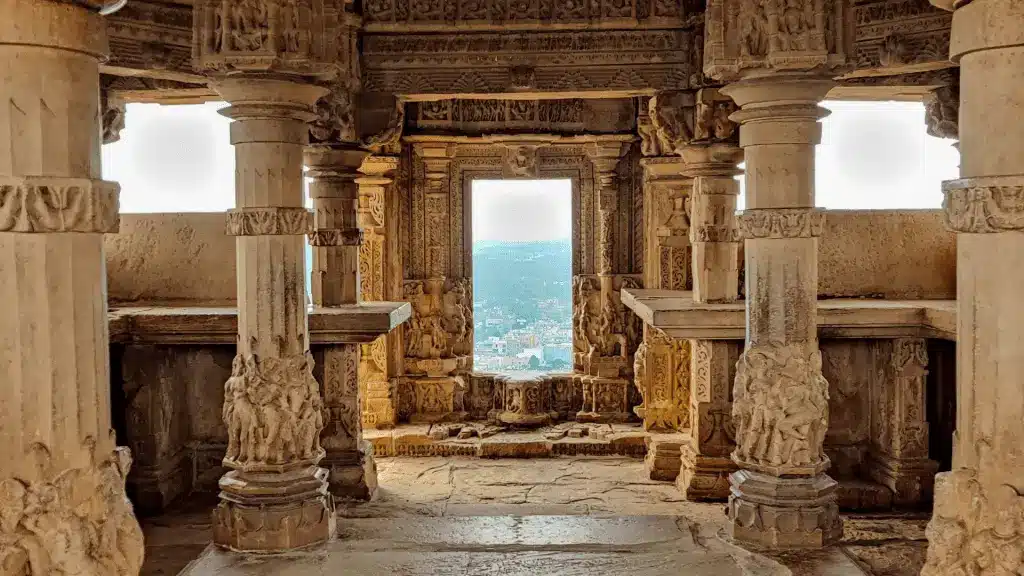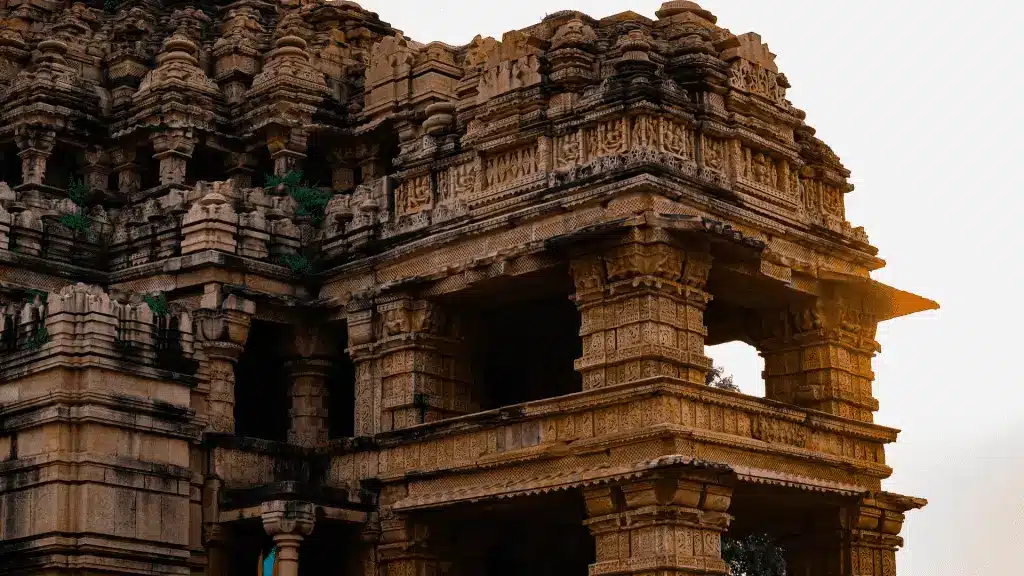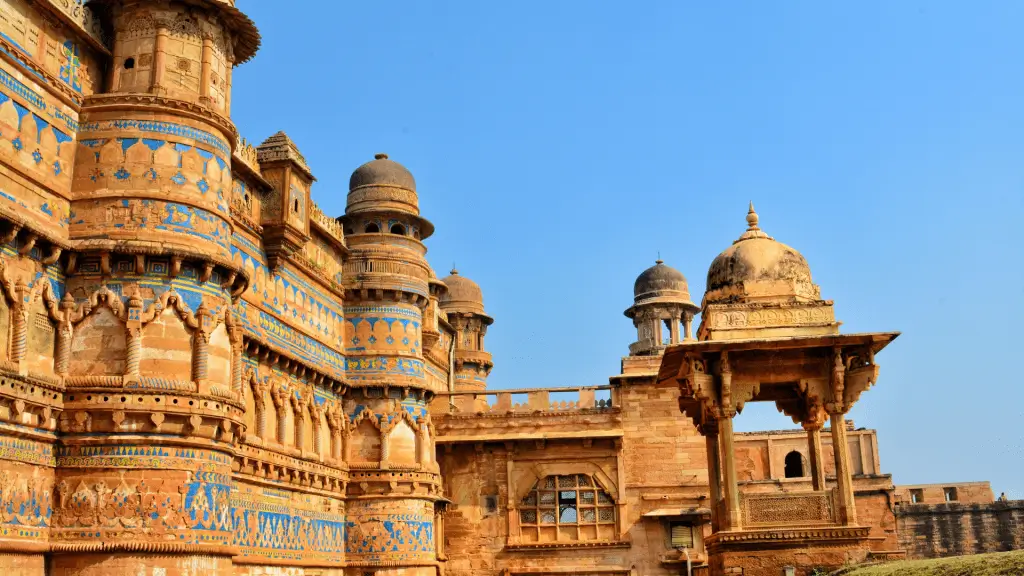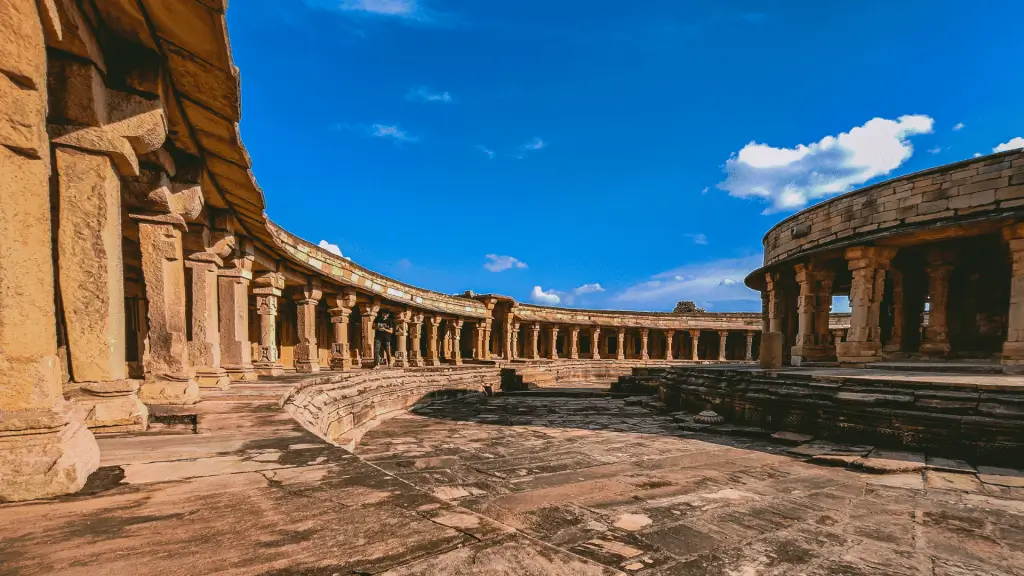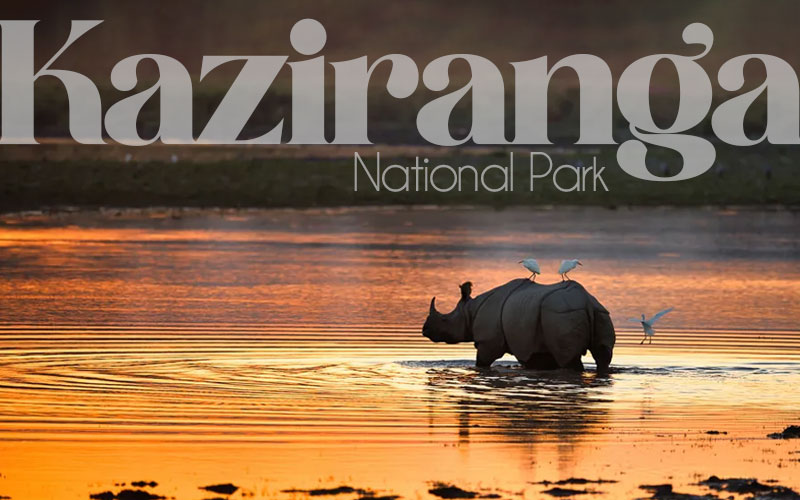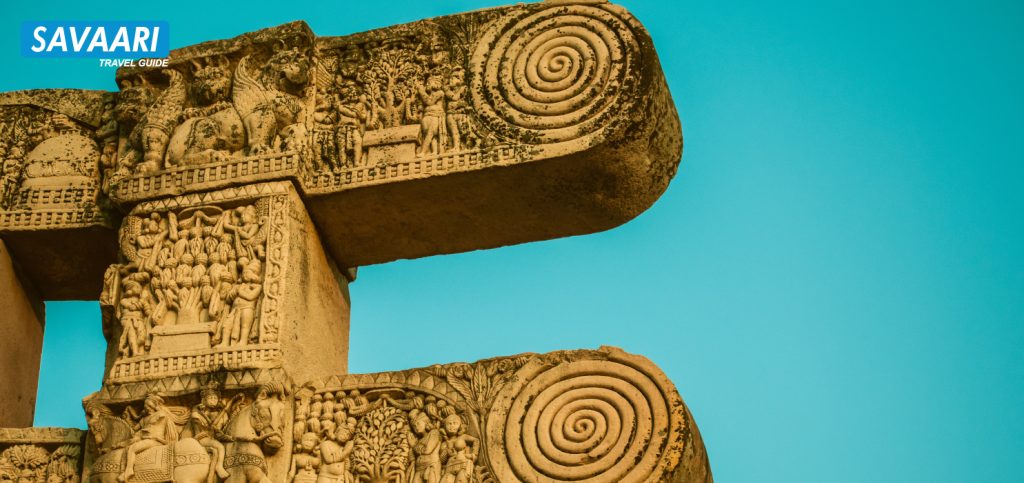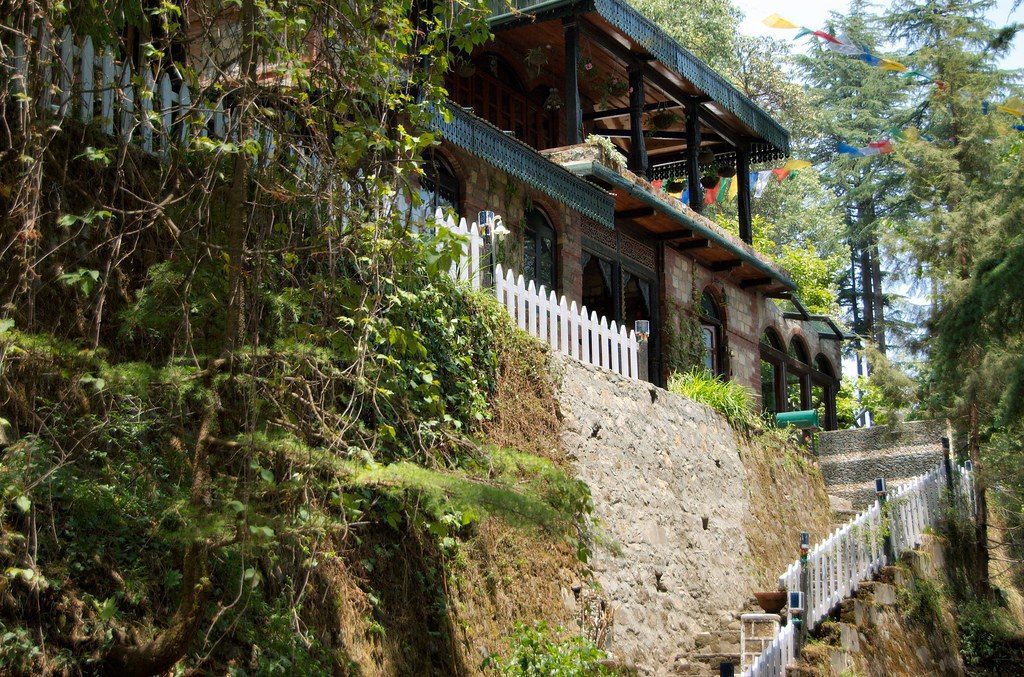Gwalior is an ancient and significant city of Madhya Pradesh and the largest city in the Gird region of the state. Recently, it has been selected as one of the 100 Indian cities to be developed into a Smart city. It is the epitome of a city’s perfect amalgamation of history and modern times. Hiring a tourist cab in Gwalior will make the exploration of this historical city comfortable, especially during the hot summer months.
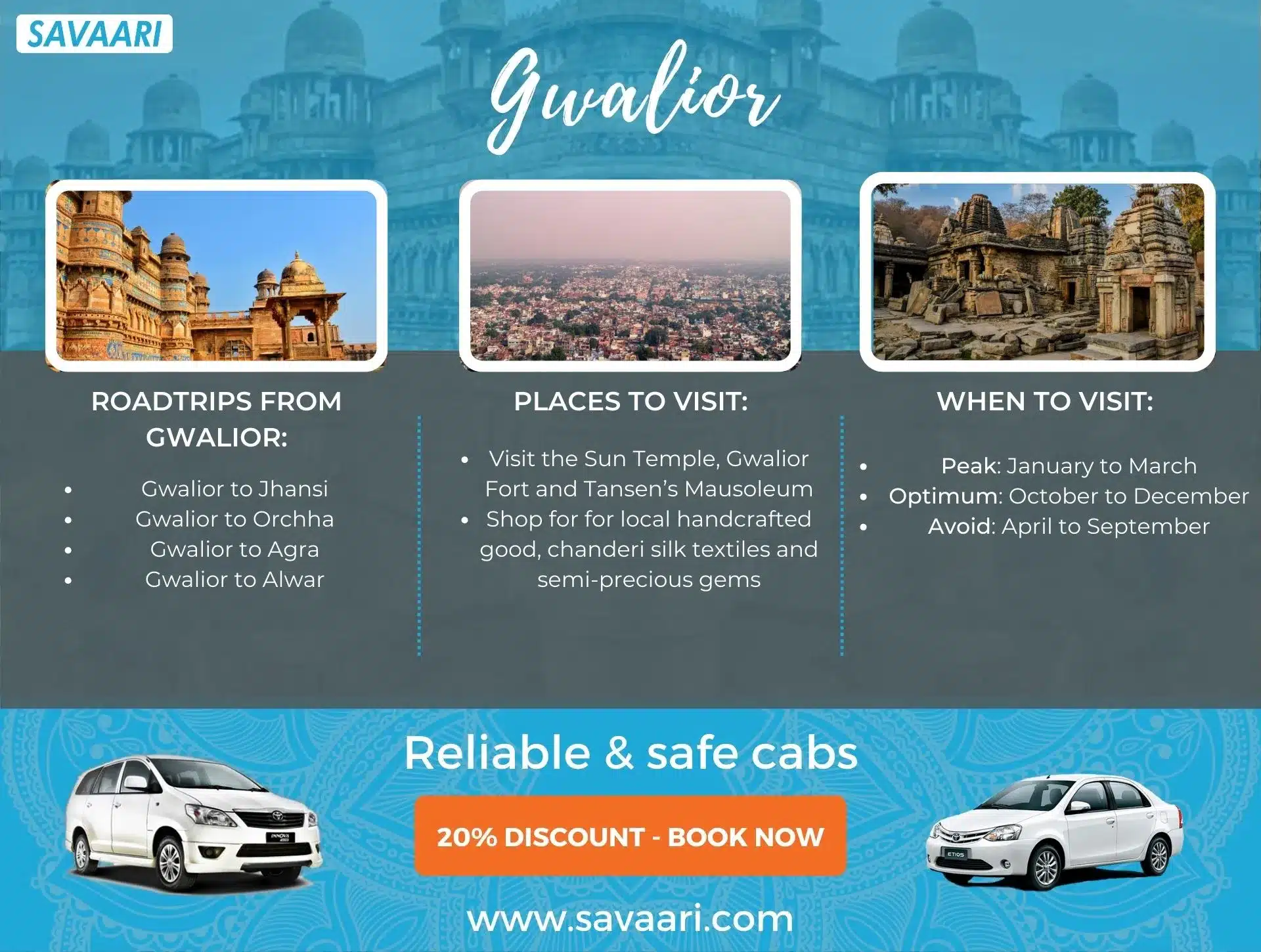
Table of Contents
Things to do in Gwalior
Apart from the historically famous places in Gwalior, you can also do other interesting activities in and around the city.
- Explore other historical places to visit near Gwalior like the Gopachal Parvat. The site is famous for ruins of rock-cut Jain monuments from the 7th and 15th century.
- Shop at the popular and expansive malls or stop at local merchants for local handcrafted good, chanderi silk textiles, semi-precious gems and stones, and artifacts.
- Take a tour of the local food trail. Stop at iconic eateries and sample some of the famous food of Gwalior like petha, kachori, poha, lambi pani poori, etc.
Places to visit in Gwalior
You can also include these popular tourist hotspots in your sightseeing itinerary –
Gwalior zoo
- How to Reach – The zoo lies at a walking distance from the city railway station. You can take a walk or hail an auto to reach.
Timings – 10.30AM-5PM
Entry Fee – INR 20, Kids – INR 5
Time Required – 1-2 Hours
Tips – Be careful of stray monkeys that roam the protected wildlife area.
Sun Temple
- How to Reach – The temple sits at 6KM from the city center. You can book a local cab or auto or even take the bus to reach.
Timings – 6:30AM – 12PM, 1PM to 6PM
Entry Fee – Free
Time Required – 1 hour
Tips – Visit in the evening hours to see the aarti at the sunset time.
Chaturbhuj Temple
- How to Reach – The temple is located near the Fort, 4KM from the city center. You can include this in your fort trip.
Timings – 24 hours
Entry Fee – Free
Time Required – Less than 1 hour
Tips – You can also visit the nearby Gujari Mahal and the archeological museum housing ancient ruins.
Famous Forts and Palaces in Gwalior
The forts, palaces, and ancient mansions are the most popular tourist attractions in the city. Here’s a handy guide to some of the must-see and must-visit Gwalior forts –
Gwalior Fort
- How to Reach – The fort area is located at 3.3KM from the railway station. You can get an auto, bus, or book a cab to reach.
Timings – 6AM-5.30PM
Entry Fee – INR 75, Free for children below 15 years
Time Required – 3-4 Hours
Tips – Don’t miss the 9th-century temple on the premise and the light and sound show held in the evenings.
Jai Vilas Palace
- How to Reach – The palace is located nearly 3KM from the city railway station. You can book a cab, local auto, or bus to reach.
Timings -10AM – 4:45PM (April to September), 10AM – 4:30PM (October to March) (Closed on Wednesdays)
Entry Fee –- Indians: INR 100
- Camera/Mobile: INR 70
- Video Camera: INR 150
- Children (up to 5 years): Free
- Physically Challenged People: Free
- Time Required – 2-3 hours
Tips – Visit the art gallery and the library on premises that houses over 5000 books from different eras.
Tansen’s Mausoleum
- How to Reach – The mausoleum and tomb is located 5 km from the city center. You can book a local cab or take the city bus or auto to reach.
Timings – 9AM-6PM
Entry Fee – Free
Time Required – 1-2 Hours
Tips – Attend the Tansen Music Festival, held every November-December near the tomb.
Gujari Mahal
- How to Reach – The ancient palace sits at 6KM from the city center. You can easily take the local auto or bus or book a taxi to reach.
Timings – 10AM-5PM
Entry Fee– INR 10, Photography – INR 50, Videography- INR 200
Time Required – 2-3 Hours
Tips – Also visit the Jahangir Mahal nearby.
Places to eat
Being a foodie’s paradise, there’s no shortage of good restaurants and cafes in Gwalior. Explore these top-rated Gwalior restaurants on your trip –
- S.S. Kachoriwala
- Silver Saloon
- Pakwan
- Rajasthani Bhojanalaya
- Bansiwala Restaurant
- Captain’s Café
About
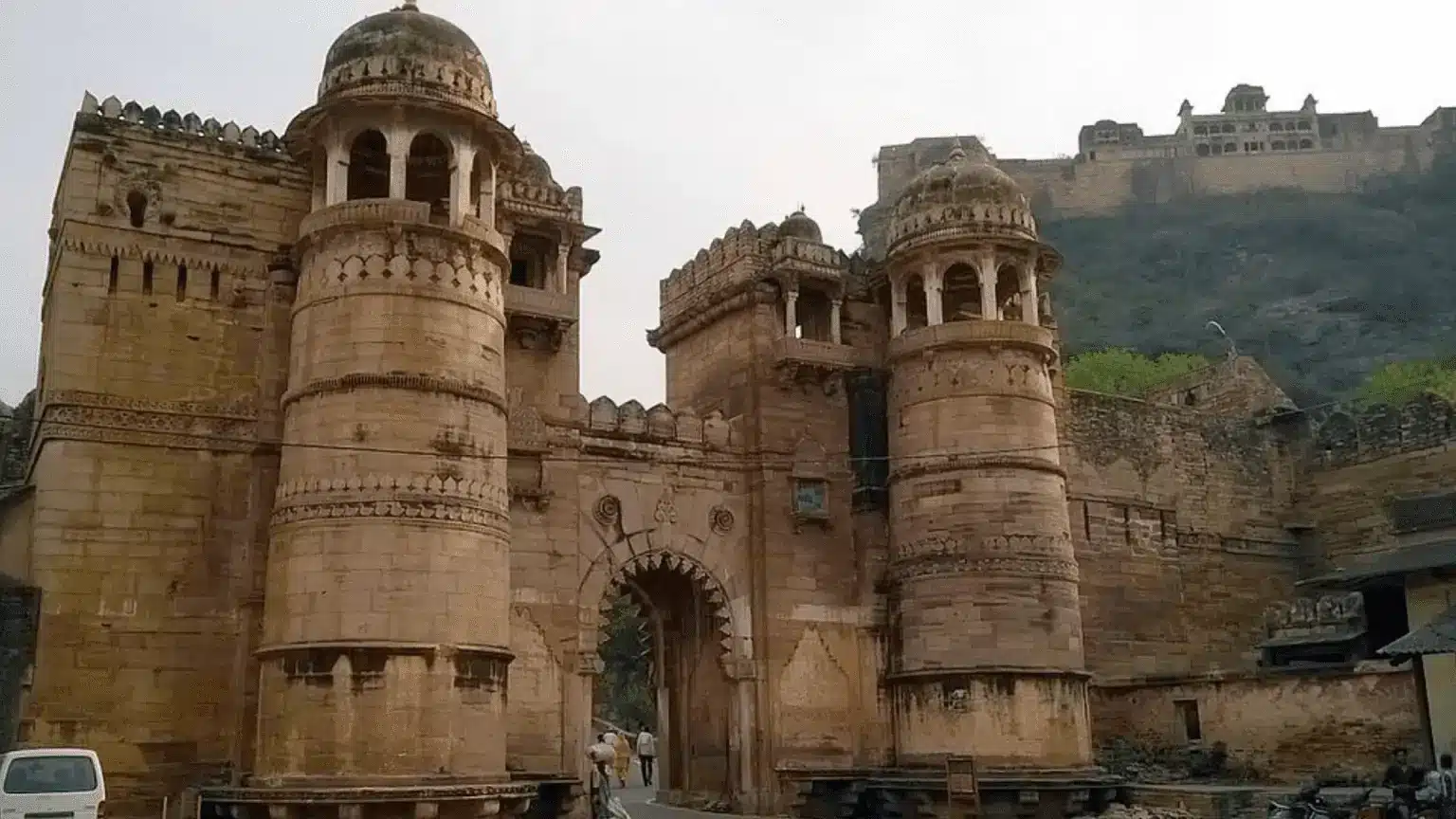
The city is surrounded by steep rocky hills on all sides and is bordered by the Ganga-Yamuna drainage basin on the north. Gwalior is located 343KM south of Delhi, 120KM from Agra, and 414KM from Bhopal, and occupies a strategic location.
Located 343 kilometres (213 mi) south of Delhi, the capital city of India, 120 kilometres (75 mi) from Agra and 414 kilometres (257 mi) from Bhopal, the state capital, the city occupies a strategic location in the Gird region of India.
What is Gwalior famous for?
A land of majestic palaces and ancient temples, it is the historical places that the city is famous for. The Gwalior Fort, is the city’s fame and signature monument, and also the best place to visit in the city.
The history of the fort is what makes it so popular. It was regarded as the “pearl among fortresses in India” by Babur. One of the most impenetrable fortresses across northern and southern kingdoms, it sits on a hilltop on a rocky mountain and looks over the entire city.
The imposing structure was built by the Tomara dynasty in the 6th century. The entire premise covers a main temple, and palaces named after legendary rulers. It was also called the Gibraltar of India. The fort houses carving that show the second oldest reference to the number zero. Gwalior fort was constructed in two parts, in two different eras. Hence, the architecture is a blend of different periods.
History
The historical city of Gwalior is said to be founded by King Suraj Sen in 8AD. Local legends say that Suraj Sen, a local chieftain, was cured of leprosy by a holy man named Gwalip. To honor him, Suraj Sen established the city and named it Gwalior.
It has seen many changes of rulers, from the Kachchhapaghatas in the 10th century to the Tomars in the 13th century, the Mughal Empire, the Marathas in the 18th century and finally the Scindias in the 18th century, the last royal family of Madhya Pradesh.
During the colonial era, this city used to be the winter capital of the state and remained a princely state under the Scindia rulers. During the Rebellion of 1857, the city formed an important site, held by the rebels. After India’s independence in 1947, the city was merged with a number of princely states and consolidated into Madhya Bharat, and finally stated as Madhya Pradesh in 1956.
Hidden Facts
While the tourist places define the city, there are some interesting facts that make this city more interesting. For instance, it is one of those few cities where the most eminent royalty of India once ruled. Another interesting trivia on Gwalior is the carpet at the Jai Vilas Palace. It is believed to be the largest carpet in the world and took almost 12 years to weave it. The palace also has two massive chandeliers, the two biggest in the world, each weighing nearly 3.5 tons.
How to Plan a Trip to Gwalior
How to reach
By Train
Gwalior is well-connected by railway to all major cities across the state and rest of India. The railway station is located 3KM from the city center. There are regular trains from Indore, Delhi, Mumbai, Bangalore, Kolkata, Chennai, Hyderabad, Ahmedabad, etc.
By Road
The city lies on the north-south corridor of the National Highway and is easily accessible from nearby cities like Indore, Bhopal, Orchha, Jabalpur, etc. via NH3, NH75, and NH92. There are regular state-run and private buses from all these places to the city. You can also book a cab from Delhi or other cities in Madhya Pradesh to reach Gwalior.
By Flight
Gwalior is served by Rajmata Vijayaraje Scindia Airport Gwalior, about 107 km from Gwalior. It is one of the four prominent airports in the state and also an Indian Air Force Base. There are frequent flights from all cities and major towns in India to the city. You can book an airport taxi from Gwalior airport and explore the city.
Best time to visit Gwalior
Sitting in a landlocked area with hilly landscape, Gwalior weather is typically dry. Summers are hot and harsh, while winters are cool and pleasant. Hence, the best time to visit Gwalior is between November to March. This is when the temperature in Gwalior is conducive enough to explore outdoors, visit the forts and enjoy the natural environment. The rainy season, between July and September is also good enough to travel. You can also visit during November and December, when the city hosts the four-day Tansen Music Festival, near Tansen’s tomb, in honor of the historical Indian musician. The festival attracts classical musicians from all over the country to perform.
Best Hotels & Resorts
Most resorts in Gwalior are transformation of old palaces and mansions, making the stay a royal experience. Check out some of these best Gwalior hotels and resorts to stay –
| Hotel Name | Address |
|---|---|
| Taj Usha Kiran Palace | Jayendraganj, Lashkar, Gwalior, Madhya Pradesh 474009 Phone: 0751 244 4000 |
| Dera Haveli | Phalka Bazar Road, Sardar Phalke bada, lashkar, Gwalior, Madhya Pradesh 474001 |
| MPT Tansen Residency | 6-A, Gandhi Rd, LNUPE Campus, Thatipur, Gwalior, Madhya Pradesh 474002 Phone: 0751 234 0370 |
| The Golden Village Hotel & Restaurant | Lalitpur Colony, Lashkar, Gwalior, Madhya Pradesh 474009 |
Download our Savaari car Booking app for a smooth and pleasant journey.
Nearby Road trips from Gwalior
| Destination | Distance | Time Taken |
|---|---|---|
| Gwalior to Jhansi | 101Km | 2 Hours |
| Gwalior to Orchha | 120 Km | 2 Hours |
| Gwalior to Agra | 120 Km | 2.5 Hours |
| Gwalior to Alwar | 260 Km | 6 Hours |
| Gwalior to Delhi | 360 Km | 6.5 Hours |
Last Updated on April 11, 2024 by V Subhadra

